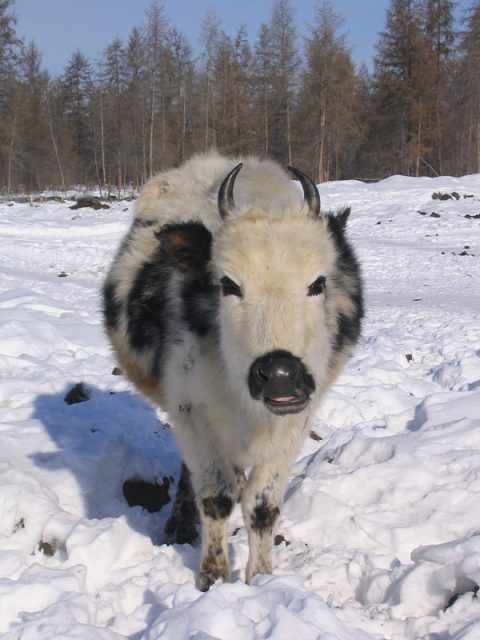Type the name of the breed you're looking for below
[wpdreams_ajaxsearchlite] Don't see the breed your're looking for? Click here and let us know!
Yakutian cattle
| Place of Origin | Sakha Republic |
| Origin | The Yakutian cattle is descended from the indigenous Siberian cattle breeds. The Sakha (i.e. Yakuts) brought it from the southern Baikal region to the lower reaches of the Lena, the Yana, the Indigirka and the Kolyma rivers when they migrated northward in the 13th century. Together with the Yakutian horse, it was the basis of the Sakha culture of meat and dairy livestock in the harsh conditions of the Russian Far North. Yakutian cattle were purebred until 1929, but then an extensive crossbreeding with the more productive Simmental cattle and Kholmogory cattle began. While many other landraces were lost in this era, the Yakutian cattle was saved by traditional cattle breeders and individual scientists. |
| Purpose | Yakutian cattle are a triple-purpose breed that produce milk and meat and have also been used as a draft (work) animals. The average milk yield is approximately 1,000 kg per year. Yakutian cows have a rich milk, With an average fat content of 5.03% and an average protein content of 4.69%. The meat of Yakutian cattle is known for its natural marbling. |
| Appearance | Yakutian cattle are of relatively small size. Cows stand between 110 to 112 cm high at the withers, bulls reach a height of 115 to 127 cm. They have short, strong legs and a deep but relatively narrow chest. The dewlap is well-developed. Their colour varies. It can be black, red, or spotted. Most animals have a white dorsal stripe along the back, and in dark animals the hair between the horns is often reddish-brown. Their large abdomen and long digestive tract allow them to make efficient use both of grass and browse. They grow subcutaneous fat very quickly during the short pasture season and survive under poor feed conditions in winter. A number of further traits, such as a thick winter coat, a small, fur-covered udder resp. scrotum, efficient thermoregulation, and low metabolic rates at low temperatures, lead to the Yakutian cattle’s extreme tolerance towards freezing temperatures. A compelling example of this is the case of several cows which survived on their own in the taiga forest for three months in late 2011 in deep snows and temperatures reaching as low as –40 °C (–40 °F). Yakutian cattle exhibit resistance to tuberculosis, leucosis, and brucellosis. |
| Horns | Horned; variable shape and direction. |
| Cows Average Weight | 300 - 400 kg (661 - 882 lbs.) |
| Bulls Average Weight | 500 - 600 kg (1,102 - 1,323 lbs.) |
| Other Considerations | Protected by the world’s first conservation law for a domestic breed. Currently there are approximately 1200 purebred Yakutian cattle, all of them in the Sakha Republic (Yakutia) of the Russian Federation. The breeding population consists of only 525 breeding cows and 28 breeding bulls, the rest are mostly dairy cows. Consequently, the Yakutian cattle are classified as an endangered breed by the Food and Agriculture Organization of the United Nations (FAO). 74% of the cattle are to be found the Eveno-Bytantaysky District, 150 km north of the polar circle on the lower reaches of the Lena River and close to the northern pole of cold (see climate data), the others were moved to the southern part of the Sakha Republic in the first years of this century. They are kept by private farmers and by farming co-operatives and it is also common for non-farming households to keep a few head for private use. The largest herd is held on the experimental farm of the Agricultural Research Institute of Yakutia. The breeding records are maintained by the Laboratory of Cattle Breeding of the Yakutian Research Institute of Agriculture in Yakutsk. Their adaption to the extreme climatic conditions of northern Siberia, their genetic distinctiveness and resulting high genetic value for the maintenance of cattle diversity, and their cultural value have led to conservation efforts which resulted in the Russian Federation passing a law to protect and conserve them, the world’s first conservation law for a domestic breed. |



